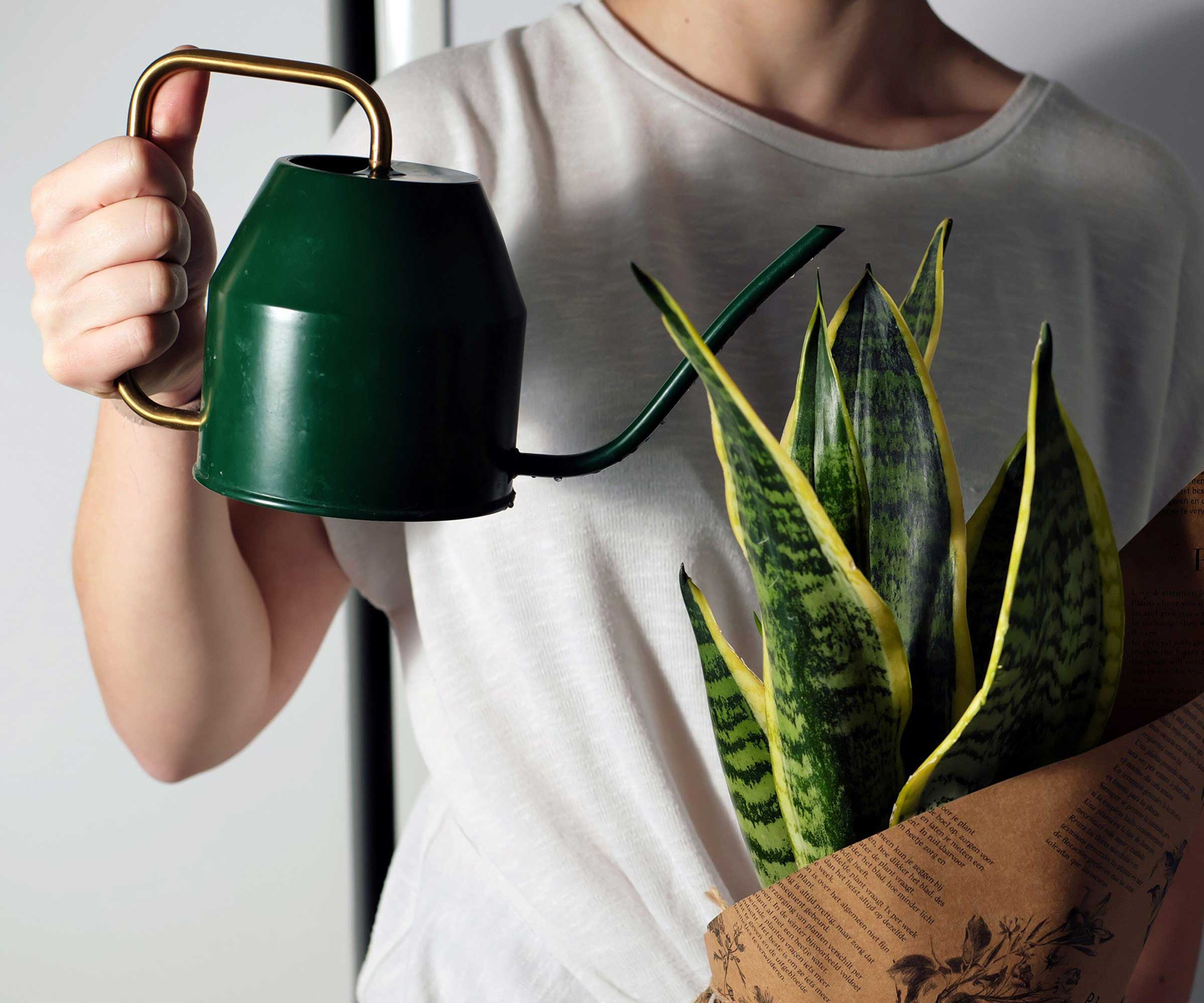How often should I water a snake plant? Plus the best ways to do so
Knowing when and how to water a snake plant will keep these indoor favorites thriving for years to come


If your houseplant collection includes a snake plant, it's important to know how often to water it. Knowing exactly how to water it is essential, too, to keep these spiky specimens looking their best in your home.
Also known as mother-in-law’s tongue, bowstring hemp, or sansevieria, snake plants hail from sub-tropical regions. They like a bright room, but will make do with lower light levels, and don't need much in the way of care. That's why they're one of the best indoor plants for beginners, as well as busy homeowners that are short on time.
As with all plants, they'll need a drink now and again – but proceed with caution. Watering too frequently is hazardous to these plants, so it's important you get your routine right to help them last.

Snake plants are super low-maintenance

A former gardener and allotment-grower, Holly now flexes her green fingers by caring for her ever-growing collection of houseplants – including hanging pothos, multiple spider plants grown from cuttings, and architectural snake plants.
How often should I water a snake plant?
'Because this plant is a succulent, it stores water within its foliage, so it is not necessary to keep the soil damp,' says John Negus, a gardening expert from Amateur Gardening magazine. 'During the growing season, water when the soil becomes dry to the touch, but during the winter, water only once a month.'
Vladan Nikolic, a houseplant expert, says you can use a chopstick to check the soil before you start watering. 'Push it gently all the way down, to the bottom of the pot,' he says. If the chopstick comes out clean and dry, it’s watering time. If it has soil stuck to it, don't water – wait a few more days before checking again.
'Be careful not to over-water, as this can cause the root and base of the plant to rot,' John warns. A telltale sign that you're being overly generous is if your snake plant has yellow leaves of if your snake plant leaves are curling. If the tips of the leaves are turning brown and crispy, then it's the opposite: it's high time to give it a drink.
After propagating my snake plant by division, I now have two that grace an east-facing window sill in the spare room. I probably water them around once a month or so all year round, maybe a little more in the height of summer. Forgetting about them from time to time doesn't seem to bother them: I've had them for around six years! They're definitely the easiest indoor plants I own.
Design expertise in your inbox – from inspiring decorating ideas and beautiful celebrity homes to practical gardening advice and shopping round-ups.

Avoid wetting the leaves when watering your snake plant
The tried-and-tested methods for watering a snake plant
Before you start watering, it's important to make sure your snake plant is planted in a pot with drainage holes. This will prevent the soil from becoming waterlogged. And bear in mind that the type of pot will affect how often you need to water your snake plant, as Vladan reveals. 'Snake plants in terracotta pots will need to be watered more frequently, as clay pots absorb moisture from the soil.' On the other hand, glazed ceramic and plastic pots don’t, he adds, so snake plants in these will need to be watered less often.
It's also best to ensure it's planted in the right sort of compost: a cactus and succulent potting mix (available on Amazon), that's well-draining.
You can water your snake plant with an indoor watering can (we love the look of this copper-colored one from Amazon), using tepid water. Rainwater is best, if you collect it outdoors, as opposed to tap water which has more chemicals and salts. Avoid watering the leaves or allowing water to pool in the center of the plant, as this can cause it to rot. Instead, water the soil directly, allowing it to drain out of the bottom of the pot.
Alternatively, you can sit your snake plant's pot in a tray of water for ten minutes or so to allow the moisture to work its way up through the holes and into the soil.
In terms of humidity, 'average house humidity is advised – but this plant can tolerate dry air conditions and drafts,' says John. Similarly to any other succulents you may own, don't be tempted to mist them – it can lead to rot and mold rather than being beneficial.

Holly started writing about gardening five years ago, and she is a regular contributor to Homes & Gardens. She has also written many gardening features for Woman & Home and Real Homes, too. She has previous experience as a professional gardener, where she helped to plant and maintain private gardens. Holly has also looked after allotment plots over the years and loves to grow her own flowers and veggies from seed. In her spare time, she enjoys visiting local gardens, botanical drawing, and tending to her ever-growing collection of houseplants.